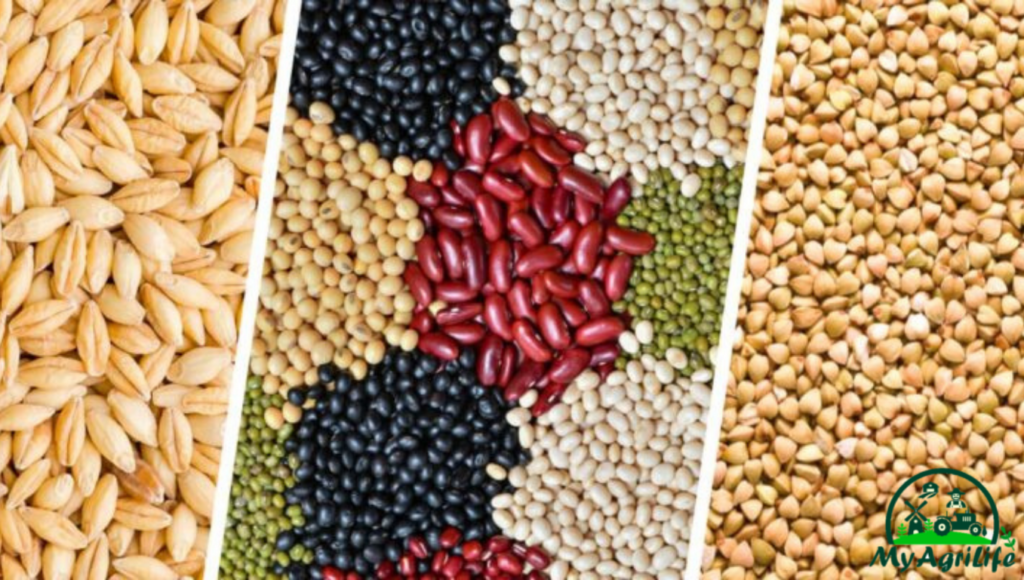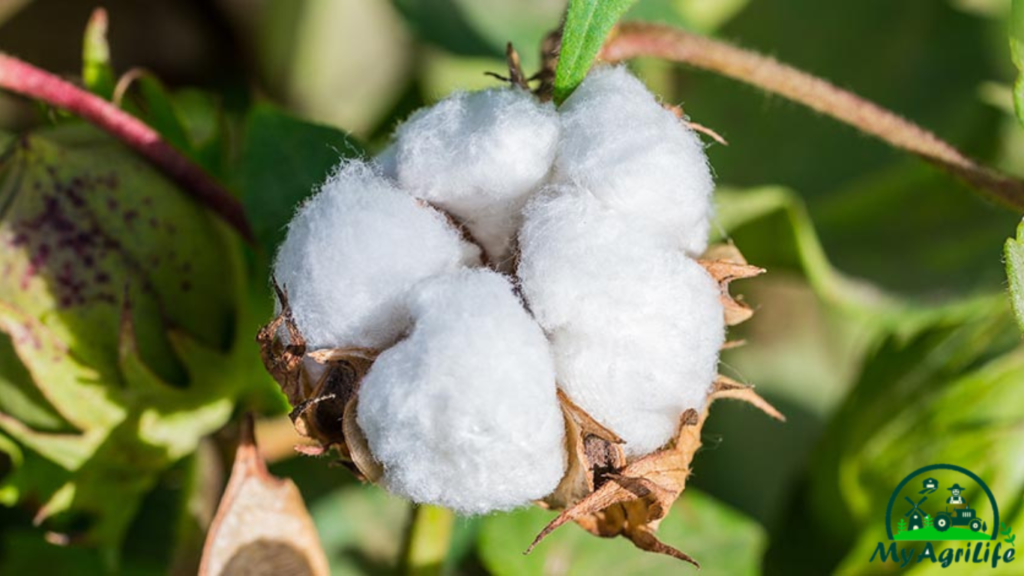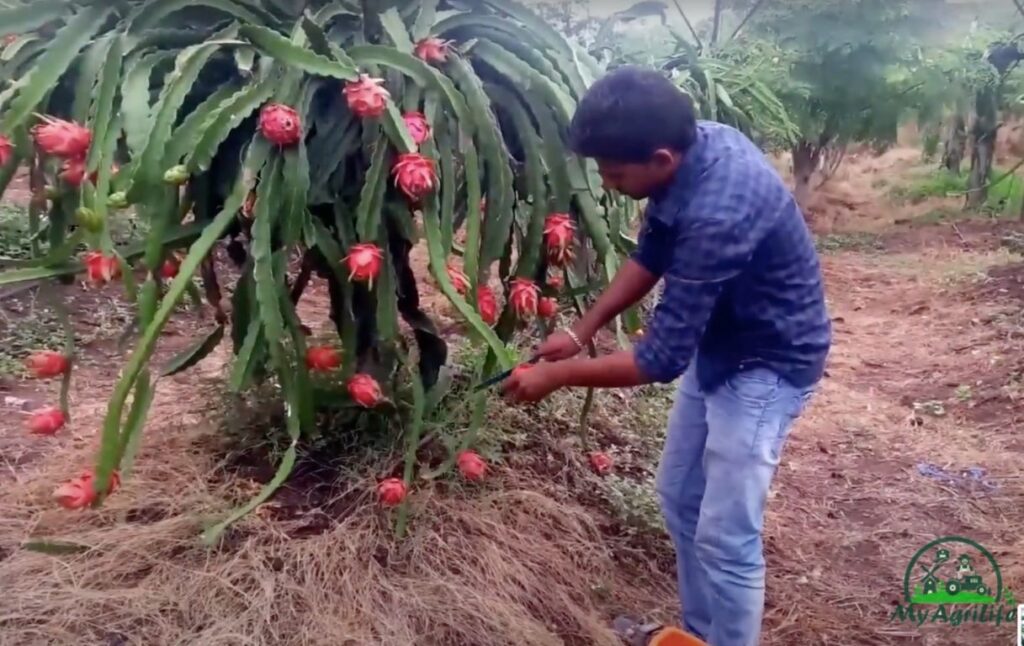Introduction
In agriculture, crops are plants that are cultivated for various purposes, such as food production, economic gain, and industrial use. Crops form the backbone of agriculture, providing essential resources for human consumption and economic development. The classification of crops is a fundamental aspect of agricultural science, as it helps farmers, researchers, and policymakers understand the characteristics, requirements, and benefits of different types of crops.

The classification of crops involves categorizing them based on various factors, including their purpose, growing seasons, life span, growth habit, and plant parts used. By classifying crops, we can better understand their specific needs, optimize cultivation practices, and make informed decisions regarding crop selection, crop rotation, and resource allocation.
This article aims to explore the importance of classifying crops in agriculture and provide an overview of different classification criteria. By understanding the types of crops and their classifications, we can gain insights into their significance, cultivation practices, and potential economic and environmental impacts.
Importance of Classifying Crops in Agriculture
The classification of crops in agriculture holds significant importance for several reasons:
1.Crop Selection and Planning: By classifying crops, farmers can make informed decisions about which crops to grow based on their specific characteristics and requirements. Different crops have varying needs regarding soil type, climate, water availability, and nutrient requirements. Classification helps farmers choose crops that are well-suited to their local conditions, leading to higher yields and better resource management.
2.Crop Rotation and Diversification: Crop rotation is an essential practice in agriculture to maintain soil fertility, manage pests and diseases, and improve overall crop productivity. Classifying crops based on their characteristics allows farmers to plan effective crop rotation schedules. By rotating crops with different nutrient requirements, growth habits, and pest susceptibilities, farmers can optimize soil health, reduce pest pressure, and enhance overall sustainability.
3.Resource Allocation: Classifying crops based on their water, nutrient, and resource requirements helps in efficient allocation of resources. Farmers can optimize the use of irrigation water, fertilizers, pesticides, and other inputs by selecting crops that align with available resources. This helps in minimizing resource wastage, reducing environmental impacts, and maximizing economic returns.
4.Market Analysis and Economic Planning: Understanding the types of crops grown in a region and their classification helps in market analysis and economic planning. Different crops have varying market demands, price fluctuations, and profitability. By classifying crops, policymakers and farmers can analyze market trends, identify potential market gaps or opportunities, and make informed decisions regarding crop selection for economic gain.
5.Research and Development: Crop classification provides a framework for agricultural research and development. Scientists can focus their efforts on specific crop types and categories to improve crop varieties, develop new cultivation techniques, and address challenges related to crop production, disease resistance, and climate resilience. Classifying crops facilitates targeted research, enabling advancements in agricultural practices and technologies.
Overall, the classification of crops in agriculture is essential for informed decision-making, sustainable resource management, and the development of innovative farming practices. It helps farmers, researchers, policymakers, and other stakeholders in understanding and harnessing the potential of different crop types for improved agricultural productivity, economic growth, and environmental sustainability.
Classification of Crops Based on Purpose
Crops can be classified based on their intended purpose or use. This classification helps in understanding the primary function of each crop type and their contribution to different sectors of the economy. Here are some common categories based on the purpose of crops:
1.Food Crops:
Food crops are cultivated primarily for human consumption. They provide essential nutrients and form the basis of our diet. Food crops can further be categorized into staple crops and specialty crops.
1. Staple Crops: These are the main food sources for a large population and provide a significant portion of daily calorie intake. Examples include rice, wheat, maize (corn), potatoes, and cassava.
2. Specialty Crops: These crops are typically grown in smaller quantities and have specific culinary or cultural significance. Examples include fruits, vegetables, herbs, spices, and certain traditional or exotic crops.
2.Cash Crops:
Cash crops are grown for commercial purposes to generate income. These crops are cultivated on a large scale and are often traded on the market. Cash crops vary across regions depending on climatic conditions and market demand. Examples include cotton, coffee, tea, cocoa, tobacco, sugarcane, rubber, and various oilseeds like soybeans and sunflower.
3.Industrial Crops:
Industrial crops are cultivated for non-food purposes, primarily for industrial use. They provide raw materials for manufacturing industries, biofuels, and other industrial processes. Industrial crops can include:
1. Fiber Crops: These crops are grown for their fibers, which are used in the textile industry. Examples include cotton, jute, hemp, and flax.
2. Oilseed Crops: These crops are cultivated for their oil-rich seeds, which are used in various industrial applications, including cooking oil, biodiesel production, and cosmetic products. Examples include soybeans, sunflowers, rapeseed (canola), and palm oil.
3. Rubber and Latex Crops: These crops, such as rubber trees, are grown for their latex, which is used in the production of rubber products.
4.Feed Crops:
Feed crops are grown to provide animal feed for livestock and poultry. They are rich in nutrients and help meet the dietary requirements of farm animals. Common feed crops include corn, barley, oats, sorghum, alfalfa, and various types of grasses.
By classifying crops based on their purpose, farmers, policymakers, and market analysts can understand the specific requirements, market dynamics, and economic significance of each crop type. This information aids in decision-making related to crop selection, market planning, and resource allocation in the agricultural sector.
Classification of Crops Based on Growing Seasons
Crops can be classified based on the seasons in which they are grown. This classification takes into account the climatic conditions and the optimal time for sowing and harvesting each crop. The three main categories based on growing seasons are:
1.Kharif Crops:
Kharif crops are sown during the monsoon season and harvested in the autumn. These crops require warm and wet conditions for germination, growth, and maturation. Kharif crops are prevalent in regions with a monsoon climate. Some common examples of Kharif crops include rice, maize (corn), sorghum, millets, cotton, soybeans, pigeon pea (tur), and mung beans.
2.Rabi Crops:
Rabi crops are sown in the winter season and harvested in the spring. These crops thrive in cool weather conditions with adequate irrigation. Rabi crops are grown in regions with a winter-dominant or Mediterranean climate. Examples of Rabi crops include wheat, barley, oats, mustard, peas, chickpeas, linseed, and various vegetables like carrots and radishes.
3.Zaid Crops:
Zaid crops are short-duration crops grown in the summer season between the harvest of Rabi crops and the sowing of Kharif crops. These crops utilize the residual moisture and warmth of the soil during the hot summer months. Zaid crops are cultivated in regions with a tropical or subtropical climate. Examples of Zaid crops include watermelon, cucumber, bitter gourd, pumpkin, muskmelon, and certain leafy greens like amaranth and fenugreek.
By classifying crops based on growing seasons, farmers can plan their agricultural activities, including sowing, irrigation, and harvesting, accordingly. It helps in optimizing the utilization of resources, mitigating climate risks, and maximizing overall crop productivity. Additionally, this classification enables efficient crop rotation and diversification strategies, as different crops have distinct growing season requirements, ensuring continuous agricultural production throughout the year.
Classification of Crops Based on Life Span
Crops can be classified based on their life span, which refers to the duration of time from sowing or planting to maturity or harvest. This classification helps in understanding the growth patterns, management practices, and cropping systems associated with different crop types. Here are the main categories based on life span:
1.Annual Crops:
Annual crops complete their life cycle within one year or growing season. They are sown from seeds, grow, produce flowers or fruits, and then die off after maturity. Annual crops are suitable for short-duration cultivation and are commonly used in agricultural systems. Examples of annual crops include rice, wheat, maize (corn), barley, soybeans, peas, lettuce, tomatoes, and many vegetables and herbs.
2.Biennial Crops:
Biennial crops have a life cycle spanning two years. During the first year, biennial crops grow vegetatively, forming leaves and stems. In the second year, they flower, produce seeds or fruits, and complete their life cycle. Biennial crops require a period of vernalization, which is exposure to a certain period of cold temperatures, to induce flowering. Examples of biennial crops include carrots, onions, beets, parsley, cabbage, and some types of flowering plants like foxglove and hollyhock.
3.Perennial Crops:
Perennial crops have a longer life span and can persist for multiple years. They continue to grow and produce crops over several seasons, providing a more sustained source of yield. Perennial crops often have deeper root systems and exhibit greater resistance to environmental stresses. Examples of perennial crops include fruit trees (such as apple, citrus, and mango), nut trees (such as almonds and walnuts), grapevines, coffee plants, cocoa trees, asparagus, and some varieties of grasses used for forage.
The classification based on life span is essential for planning crop rotations, understanding the sustainability of cropping systems, and estimating long-term resource requirements. Annual crops offer flexibility for seasonal variations and short-term planning, while biennial and perennial crops provide stability and long-term production. Farmers often integrate a combination of these crop types into their agricultural practices, taking into account factors such as climate, soil conditions, market demand, and available resources.
Classification of Crops Based on Life Span
Crops can be classified based on their life span, which refers to the duration of time from sowing or planting to maturity or harvest. This classification helps in understanding the growth patterns, management practices, and cropping systems associated with different crop types. Here are the main categories based on life span:
1.Annual crops
Annual crops complete their life cycle within one year or growing season. They are sown from seeds, grow, produce flowers or fruits, and then die off after maturity. Annual crops are suitable for short-duration cultivation and are commonly used in agricultural systems. Examples of annual crops include rice, wheat, maize (corn), barley, soybeans, peas, lettuce, tomatoes, and many vegetables and herbs.
2.Biennial Crops:
Biennial crops have a life cycle spanning two years. During the first year, biennial crops grow vegetatively, forming leaves and stems. They do not produce flowers or fruits in the first year. In the second year, they undergo flowering, produce seeds or fruits, and complete their life cycle. Biennial crops require a period of vernalization, which is exposure to a certain period of cold temperatures, to induce flowering. Examples of biennial crops include carrots, onions, beets, parsley, cabbage, and some types of flowering plants like foxglove and hollyhock.
3.Perennial Crops:
Perennial crops have a longer life span and can persist for multiple years. They continue to grow and produce crops over several seasons, providing a more sustained source of yield. Perennial crops often have deeper root systems and exhibit greater resistance to environmental stresses. Examples of perennial crops include fruit trees (such as apple, citrus, and mango), nut trees (such as almonds and walnuts), grapevines, coffee plants, cocoa trees, asparagus, and some varieties of grasses used for forage.
The classification based on life span is essential for planning crop rotations, understanding the sustainability of cropping systems, and estimating long-term resource requirements. Annual crops offer flexibility for seasonal variations and short-term planning, while biennial and perennial crops provide stability and long-term production. Farmers often integrate a combination of these crop types into their agricultural practices, taking into account factors such as climate, soil conditions, market demand, and available resources.
Classification of Crops Based on Growth Habit
Crops can be classified based on their growth habit, which refers to the form and structure of the plants as they grow. This classification helps in understanding the growth patterns, cultivation practices, and management requirements of different crop types. Here are two main categories based on growth habit:
1.Herbaceous Crops:
Herbaceous crops are characterized by soft, succulent stems that do not produce woody tissue. These crops generally have a shorter life span and are more sensitive to environmental conditions. Herbaceous crops can be further divided into two subcategories:
1. Forbs: Forbs are broad-leaved herbaceous plants that are not grasses. Examples include most vegetables, flowers, and many medicinal plants.
2. Grasses: Grasses are herbaceous plants with long, narrow leaves, and they often form clumps or tussocks. Examples include grains like rice, wheat, maize (corn), barley, and oat, as well as forage grasses like ryegrass and Bermuda grass.
2.Woody Crops:
Woody crops are characterized by the presence of persistent woody tissue, including stems, branches, and trunks. These crops typically have a longer life span and are more resilient to environmental stresses. Woody crops can be further divided into two subcategories:
1. Trees: Trees are tall, perennial woody plants with a single main trunk and an elevated crown. Examples include fruit trees like apple, citrus, and mango, as well as timber trees like oak and pine.
2. Shrubs: Shrubs are woody plants that are shorter than trees and typically have multiple stems branching from the base. Examples include berry shrubs like blueberry and raspberry, ornamental shrubs, and certain medicinal plants like rosemary and lavender.
The classification based on growth habit is important for understanding the structural characteristics, growth patterns, and management practices associated with different crop types. Herbaceous crops are often grown for their edible parts, while woody crops are cultivated for fruits, nuts, timber, or ornamental purposes. Farmers consider the growth habit of crops when planning planting densities, pruning practices, and crop maintenance techniques.
Classification of Crops Based on Plant Parts Used
Crops can be classified based on the parts of the plant that are primarily utilized for various purposes. This classification helps in understanding the specific uses and economic value associated with different crop types. Here are the main categories based on plant parts used:
1.Grain Crops:
Grain crops are cultivated for their edible seeds or grains, which serve as important sources of carbohydrates, proteins, and other nutrients. These crops are typically harvested when the seeds are mature and dried. Examples of grain crops include rice, wheat, maize (corn), barley, oats, rye, millets, and sorghum.
2.Fruit Crops:
Fruit crops are grown primarily for their edible fruits, which are typically fleshy or juicy structures containing seeds. These crops are harvested when the fruits reach maturity and are consumed fresh or processed into various products. Examples of fruit crops include apple, banana, orange, strawberry, tomato, grape, mango, pineapple, and various types of berries.
3.Vegetable Crops:
Vegetable crops are cultivated for their edible vegetative parts, such as leaves, stems, roots, tubers, or bulbs. These crops are harvested at different stages of growth, depending on the specific plant part consumed. Examples of vegetable crops include lettuce, spinach, cabbage, broccoli, carrot, potato, onion, garlic, radish, and cucumber.
4.Legume Crops:
Legume crops belong to the Fabaceae family and are valued for their seeds, which are high in protein and other nutrients. These crops have a unique ability to fix atmospheric nitrogen through a symbiotic relationship with nitrogen-fixing bacteria. Legumes are often used as food, animal feed, and for soil improvement in crop rotation systems. Examples of legume crops include soybeans, lentils, chickpeas, peanuts, beans, and peas.
5.Fiber Crops:
Fiber crops are grown for the fibers present in their plant tissues, which have various industrial and commercial uses. These crops provide raw materials for the textile industry, paper production, and other fiber-based products. Examples of fiber crops include cotton, jute, hemp, flax, and sisal.
6.Oilseed Crops:
Oilseed crops are cultivated for the oil-rich seeds they produce, which are used for cooking, biodiesel production, industrial applications, and as ingredients in various food products. Examples of oilseed crops include soybeans, sunflowers, rapeseed (canola), sesame, peanuts, and olives.
By classifying crops based on the plant parts used, farmers, processors, and consumers can better understand the specific uses and value associated with each crop type. This information guides cultivation practices, harvesting techniques, processing methods, and market utilization of different crops.
Conclusion
In conclusion, the classification of crops in agriculture serves as a valuable tool for understanding the diverse nature of crops and their specific characteristics. By categorizing crops based on purpose, growing seasons, life span, growth habit, and plant parts used, we can gain insights into their economic significance, cultivation practices, and market value.
The classification based on purpose helps us identify the primary function of each crop, whether it is for food consumption, commercial trade, industrial use, or animal feed. Understanding the growing seasons of crops allows for effective planning and resource allocation throughout the year. The classification based on life span helps us differentiate between annual, biennial, and perennial crops, which impacts cropping systems and long-term production strategies.
The categorization based on growth habit helps us comprehend the structure and growth patterns of crops, informing management practices and cultivation techniques. Lastly, the classification based on plant parts used provides insights into the specific uses and economic value associated with different crops, whether it is the consumption of grains, fruits, vegetables, legumes, fibers, or oil-rich seeds.
Overall, the classification of crops in agriculture enhances our understanding of crop diversity, aids in decision-making processes, and contributes to the development of sustainable and efficient agricultural systems. It plays a crucial role in maximizing crop productivity, ensuring food security, and meeting the diverse needs of society.









